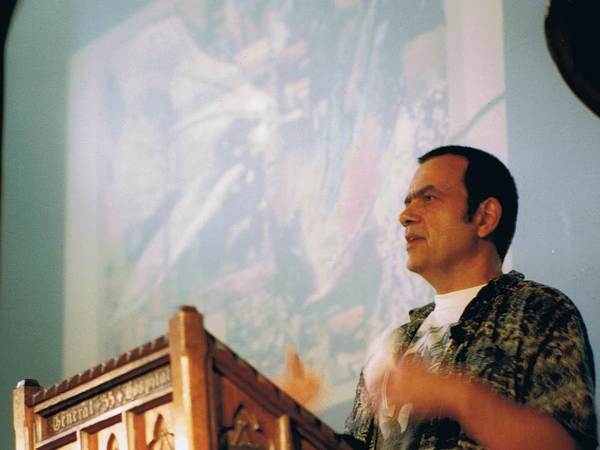
When I was interviewing Jimmy A. in the last issue, he brought up Steve Scott and said something really funny like Scott was the “Yoda of the Sacramento scene.” It was something along those lines, but it was a humorous assessment that was filled with respect and obvious affection for Steve Scott. Jimmy A. went on to compare Steve to Tom Waits (which I thought was a huge compliment) and talk about how talented he was. It got me thinking that Scott would be a great choice for a cover story. I had recently purchased Scott’s latest release Emotional Tourist which was a compilation and a retrospective covering a vast and unique career. Plus, I have always been fascinated by his The Butterfly Effect album which was released on Blonde Vinyl records years ago. There are those memories I have cemented in my mind like the first time I heard “No Memory of You”, which is a powerful spoken word track that feels like it starts at the end and ends at the beginning. It was a poetic tale that reels the listener in and hooks us with a story that is as moving as it is interesting in that I could feel myself transported to another place…a place where I felt empathetic with the object of his story.
I remember when I first found out that Steve was in the 77’s prior to Mike Roe, that was through a couple of discs called No Sense of History and Shirley, Goodness and Misery on Alternative Records. Those were some of the fun memories that are still etched in my mind. Steve Scott is a true artist; he creates visual art, spoken word, poetry, music and combines them all in unique ways to tell a story, to relate emotion and to give meaning to the world around us. He is uniquely one of a kind!
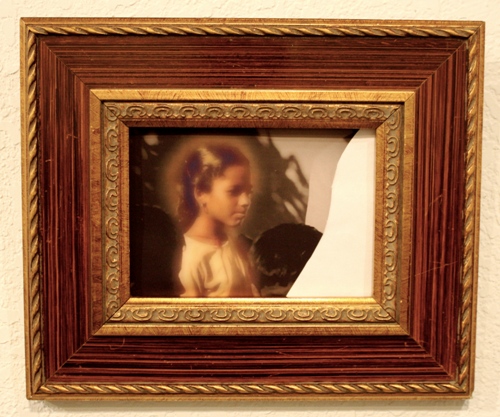 Can you give us the rundown with a bit of history about yourself? How did you get connected in the early days of the music scene, and where did you meet Randy Layton, Mike Roe and Jimmy Abegg?
Can you give us the rundown with a bit of history about yourself? How did you get connected in the early days of the music scene, and where did you meet Randy Layton, Mike Roe and Jimmy Abegg?
I’m British. I came to California because during my last year at art school I went to a Randy Stonehill concert at a nearby local church (this is in the early 1970s. Randy, and sometimes Larry Norman, was spending blocks of time in UK at this point). I met Randy and he heard some of my songs. Stonehill made a cassette for Larry Norman to hear and out of this came a mid-70’s Solid Rock record deal, and so I moved to Southern California. When things began to unravel a bit there in the late 1970s I moved to Sacramento. I had begun to build a working relationship with a church (Warehouse Christian Ministries) that had a declared interest in the arts.
It was here, in the early 1980s that Exit Records was born…. and I recorded with them along with 77s, Vector and Charlie Peacock among others. I also pursued my wider interests in the arts at this time. Jim Abegg was already part of the Warehouse ministries art and music scene when I got there. He was part of a band called Panacea. Mike Roe came in a little bit later from the San Jose area (I believe), as did Steve Griffith. I did not meet Randy Layton until much later in the late 1980’s I think…. after Exit Records had begun to wind down.
What is your profession right now? If I remember correctly Jimmy A. told me you were a pastor. What church and where?
I’m an associate staff member with Warehouse Christian ministries. I also do some part time adjunct teaching through a local branch of Western Seminary.
My introduction to you was The Butterfly Effect; it came out when I was 18 and blew me away. It was my introduction to your art and your craft. How did you get connected to Blonde Vinyl records and Michael Knott?
Part of what I did, and still do, is going out and give talks/performances based in my experiences in the arts. Back in 1990/1991 I did a few days as a visiting artist at Biola in Southern California. It was out of my Biola connections at the time that I got introduced to people working with Blonde Vinyl, Chris Rumbaugh and Ken Bower among others, and eventually Michael Knott.
Can you give me a history and explanation of the art movements of the last two centuries? (I was told to ask you for a detailed explanation on this question as well.)
Way too vast to sum up. I think you can divide into Modernism and pursuit of truth, be it truth to materials, truth to the essence of art (the monochrome canvas), truth to the uncensored unconscious mind (surrealism to abstract expressionism and beyond), or the truth of the disintegrating social conditions of the time (expressionism, realism and, in a different way, Dada). Art in pursuit of Truth.
Post Modernism = abandoning the quest for a singular `truth’ as a biased enterprise rooted in power plays and untested (or untestable) presuppositions. Multiple ‘truths’ glimpsed in or through the free play of signs, symbols, signifiers and systems, irony, pastiche, collage/montage , mixed media, no media, concept, a return to imagery (but ironically) a sort of digitally connected ‘floating world.’ After Postmodernism (reckoned by some as the death rattle of modernism…?) is Alter-modernity on one hand that embraces (it seems) process, liquidity, precariousness, contingency, nomad-ism, rootless-ness…..or Meta-modernism that (among other things) pursues sincerity in an age of irony or post irony.
This hardly does justice to a very complex series of developments, and I must keep stressing I know how superficial this is and full of lame generalizations. This is just the late 19th thru to the 21st century. Maybe you could say it is a perennial tug of war between those who wish to preserve truth (the Classical) versus those that want to discover it (the romantics). That too is a horrendous cartoon generalization. I’d sooner much sooner provide a reading list or something.
 What is “Run with the Fire” and what exactly are you doing in helping to launch that?
What is “Run with the Fire” and what exactly are you doing in helping to launch that?
It is an international art exhibit dreamed up and curated by three organizations. My organization is called CANA (Christian Artists Networking Association) and two UK based organizations, Commission4Mission and Veritasse. This exhibit combines virtual images of art from different parts of the world on a DVD package with a `real’ art exhibit of local artists. It is being installed in galleries, churches and community centers in different parts of the UK and beyond, with the virtual art on DVD and monitor/screen and the other art on the walls around it. I chose the UK because it is Olympic year, and one of the central themes of `Run with the fire’ is the concept of running with the flame of inspiration or an idea.
Much of this art that has been made is the product of one creative person passing on an idea to another, who turns it into an art image. I personally was inspired by my own attempts to put together a `virtual ‘ exhibit in time for the Olympics in Beijing in 2008, and that exhibit had its own roots in conversations I was having with sculptors and artists on the island of Bali in 2005 during one of our CANA conferences.
With this exhibit being in the UK, is there anything similar here in the States?
US interest in `Run with the fire’ has started to pick up. There’s also been inquiries from places as exotic as Singapore and Finland, and last time I checked there was an arts group in Bulgaria (one of their artists is part of the exhibit) seriously thinking about mounting a show. It is really just beginning to take off, with most of solid commitment and interest coming from different parts of the UK.
However anyone wishing to learn more about the project and maybe considering getting involved in some way (doesn’t matter where you live!!) can get in touch with:
Here’s some other links that will provide even more background info.
- runwiththefire.blogspot.com/2011/11/run-with-fire.html
- www.artway.eu/artway.asp?id=225&lang=en&action=show&type=current
- www.chelmsford.anglican.org/run-with-fire.html
Can you tell me about your recent gallery shows and what type of art that you have been showing and working on? In addition can you explain the creation process for your visual art and how that transpires?
I’m initially using the snapshots from my Asian and European travels; scanning them, editing them, printing them onto different kinds of paper, and in some cases adding hand coloring and collaging other elements. I’m then reframing them in frames and boxes found in thrift stores. That’s a very simple basic description of the kind of work I’m doing, and there’s been a couple of local gallery shows so far. In some ways it is similar to the sound loops and the songwriting, also similar to the `Boundaries’ multivolume I described. All these aspects of work, from subject to approach and to method, feed off one another. In this case I’m keying off the visual and perhaps storytelling combinations that occur when you combine and recombine images in this way and then add a further dimension or layer of possible reference with the frame. Its perhaps a bit glib to say it’s all about retrieval and renewal, but that is one layer of what interests me in working like this…..especially when I (and you) can reach back beyond the frame, the working method and get to the idea of retrieval and renewal in the `subject matter’,( travel, children, etc) itself.
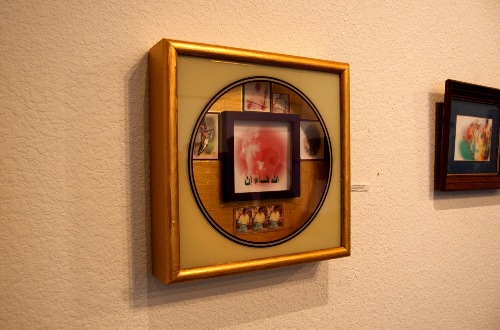 Right now I’m building collages and mixed media visual art (as well as sound loops, poems and songs). I’ve also just begun using some of these images in PowerPoint as part of a narrative/performance format. I’m inspired, somewhat imperfectly, by the presentation format of Pecha Kucha (20 slides, optimally 20 seconds per slide…in some cases auto timed so you have to keep moving). I’m not hardcore purist on times, and I’m not on a timer yet, but I do have images and narrative. I just got back from UK/London gallery opening of Run with the Fire, and as well as reading poetry at the launch, I did a couple of talks one narrating where Run with the Fire came from, and then another talk/with slides on how some of my ideas (about art and so on)are emerging and changing.
Right now I’m building collages and mixed media visual art (as well as sound loops, poems and songs). I’ve also just begun using some of these images in PowerPoint as part of a narrative/performance format. I’m inspired, somewhat imperfectly, by the presentation format of Pecha Kucha (20 slides, optimally 20 seconds per slide…in some cases auto timed so you have to keep moving). I’m not hardcore purist on times, and I’m not on a timer yet, but I do have images and narrative. I just got back from UK/London gallery opening of Run with the Fire, and as well as reading poetry at the launch, I did a couple of talks one narrating where Run with the Fire came from, and then another talk/with slides on how some of my ideas (about art and so on)are emerging and changing.
As we progress into a new century and you have had the ability to be involved for so many years in the music and art scene, do you see the “church” has become more accepting of artists and creativity as they express it, or do you see that it is still one of the ‘dead horses’ that continue to be beaten rather than embraced?
It really is a mixed bag. There’s a lot more acceptance and openness to the arts in many places/churches these days. What we all need to work on together is increasing the depth and the quality of the art. This might involve a bit of stretching, learning, risk taking and hard work.
Do you approach songwriting in the same way you do your poetry? I guess what I am asking is what comes first, do you write music and look for a lyrical ‘match’, or do the poems become lyrics and then the music comes along later? Can you describe that process a bit?
For me, when writing a song, the music comes first a lot of times. I don’t recall writing a set of lyrics and then trying to fit them to a chord sequence. This is because so much of my spoken word work really concentrates on the language and the poetry, and then finding or creating a sound loop sequence to go behind it. Actual `songwriting’ (which I regard as a bit separate) goes at things differently. I might try and write a `mood’ or at least from a mood that has been suggested to me by prior chord patterns or even instrumental combinations in sequence. I might work on the lyrics once they are `sketched’, but often times the initial `sketch’ emerges from a musical idea or sequence.
As I say my poetry/loops work is different (with songwriting… its more vernacular/conversational…. except for the end rhyme) with poetry over backing tracks, the language, the tone, the pauses, the attitude, the assumed `voice’ is much more front and center. Take away the loops and just read poetry, as I just did at the London gallery launch for `Run with the Fire’; with the pressure on words, stance, voice, etc. doing all the work is amazing.
How did the idea for Emotional Tourist come about, and with a career as full as yours, how did you decide which tracks to include?
Let’s go back to the origins of the concept for me. The term `Emotional Tourist’ surfaced in an interview with David Bowie around the time of his album Lodger, which I think was late 70s, but I didn’t stumble over the phrase until early 80s when I was in UK for a short while. At the time the term was used negatively (by the interviewer) to suggest a superficial using of different cultural and ethnic flavors, or just traveling along the surface of different cultures. I especially liked that image/metaphor after Love in the Western World, and so I took it and built a song around it drawing upon some my own travel experiences in India and Germany for the imagery.
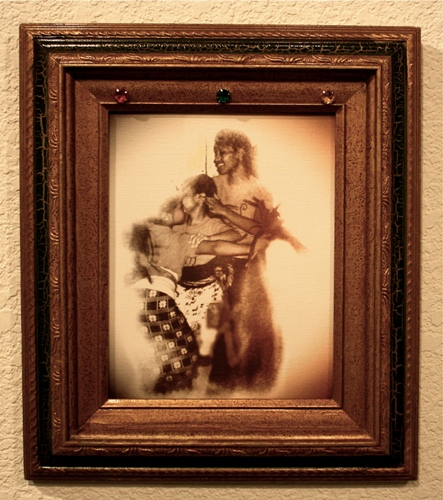 I also began to write/build a huge sprawling multivolume book called `The Boundaries’ that collaged poetry/prose and my travel journals from all over the world (Russia, India, Bali and elsewhere…), and some of that work has been featured on my spoken word albums as well as different volumes of the book put out by small presses here and there. Actually both the song/concept `Emotional Tourist’ and the approach/work of `The Boundaries’ can be seen in a kinder light in our liquid, globally connected 21st Century World. We’re all emotional tourists now… nomads, surfers… or perhaps everything is a giant loop!!
I also began to write/build a huge sprawling multivolume book called `The Boundaries’ that collaged poetry/prose and my travel journals from all over the world (Russia, India, Bali and elsewhere…), and some of that work has been featured on my spoken word albums as well as different volumes of the book put out by small presses here and there. Actually both the song/concept `Emotional Tourist’ and the approach/work of `The Boundaries’ can be seen in a kinder light in our liquid, globally connected 21st Century World. We’re all emotional tourists now… nomads, surfers… or perhaps everything is a giant loop!!
OK, talking now, about the current album…..The retrospective album choices were made with a bit of input from both the record label (Arena rock) and the executive producer. The plan was to hit the high spots in the collected works, and come up with something true to the journey I’m on (so to speak) but also keep it user friendly and engaging in terms of songs, poems and music.
How has Emotional Tourist been received?
Everything I’ve read so far has been very enthusiastic and positive.
Are you a reader? What are some books that you have read recently that you would recommend, and what are some of your favorite books and authors?
I read a lot across a wide spectrum. What I list here is just a surface smattering from what I can recall off the cuff… I have always read a lot of poetry, ranging from Basil Bunting to Tomas Transtromer; Denise Levertov is good as well as a great poet and good model for those looking to put their faith explorations into words.
I enjoy art criticism books with everything from the sadly neglected Peter Fuller to Nicolas Bourriaud via Thomas McEvilley, and many more. I am especially interested in art theorists and critics writing from a majority world context/perspective (as well as those writing about it!).
As far as theologians and Biblical books, I’ve had my eyes opened up by reading people like Thomas F. Torrance, Kenneth E. Bailey, Leslie Newbigi and Jurgen Moltmann. I could go on and on, I read a lot of fiction from the traditional to experimental including the `not quite fiction’ books about London by Iain Sinclair, and I enjoy Japanese author Shusaku Endo.
What are you working on presently?
I am just finishing up another album’s worth of material featuring poems and sound loops about Russia, Cambodia and other parts of Asia at one level. At another level it’s about art, life and spirit.
If you are interested in Steve’s art and CD’s, you can drop him an email with this as the subject:
Subject: Steve, I want to sell/talkabout/exhibit your art, have you do a performance/ reading/ powerpoint talk (whichever is appropriate) or buy a CD or two…..
If you have never listened to Steve Scott’s work, I would highly recommend his latest release Emotional Tourist which will give you a great perspective on his vast body of work. I also think The Butterfly Effect is some of the most powerful spoken word conveyed against a backdrop of beautifully mesmerizing loops and sequences.
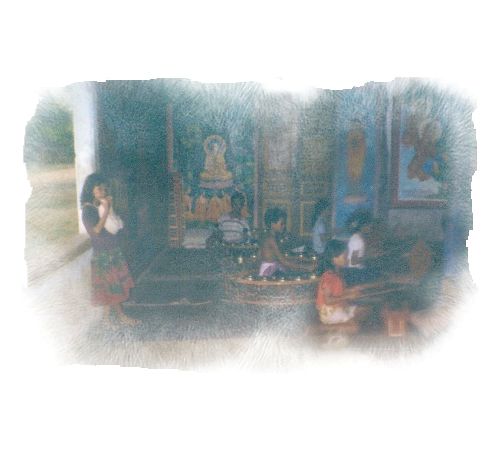


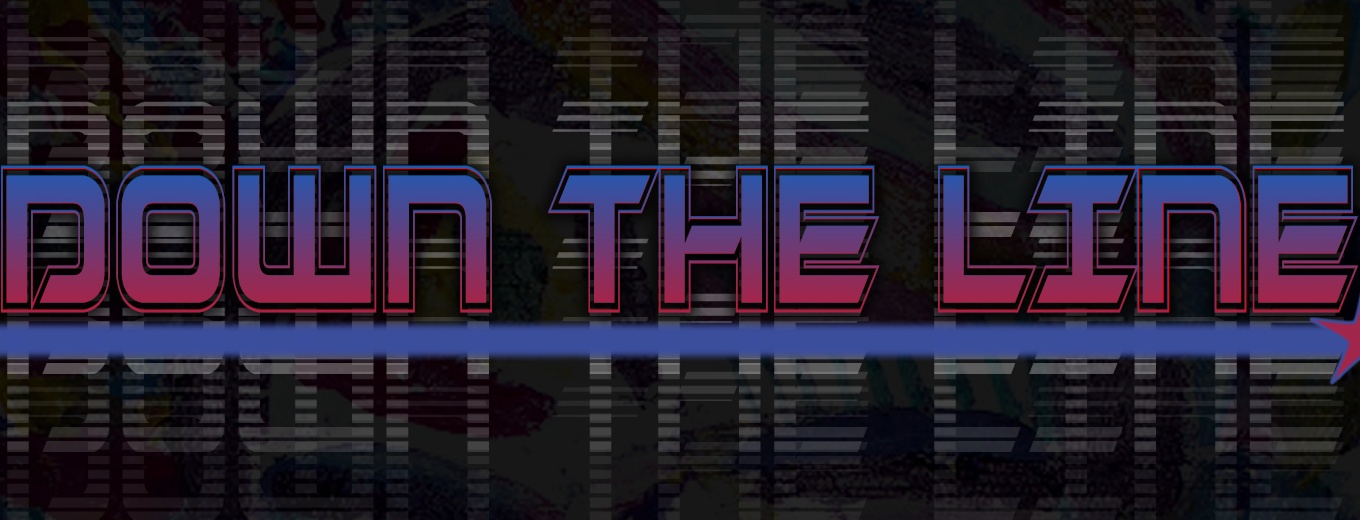
Leave a Reply